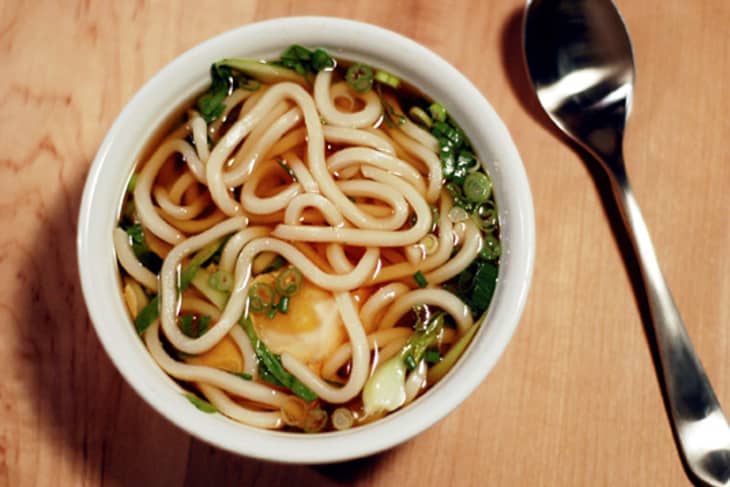What’s the Difference? Soba, Udon, and Rice Noodles
Once upon a time, if you wanted to make a recipe that called for soba, udon, or any other kind of Asian noodle, you had to also find your nearest Asian grocery store. Happily, these noodles have become much easier to find in recent years. Here’s a quick guide to the most common kinds!
You generally cook these Asian noodles the same way you cook any other kind of pasta: in a large amount of salted boiling water until the pasta is al dente. The exceptions are rice noodles and cellophane noodles, which are so thin and tender that they only need to be soaked in hot water until soft.
Soba
These noodles are made from buckwheat flour and have a correspondingly strong, nutty flavor. Many buckwheat noodles also have some wheat flour in them, which means they’re not gluten-free. However, pure buckwheat soba can be found — it’s stronger in flavor and really delicious, and of course, gluten-free.
We generally find dried soba in packets, but keep your eyes open for fresh soba at Asian markets (or make your own!). Dried soba looks like flat spaghetti and is usually light beige to dark brown-gray in color. Try soba in these recipes:
• Sesame-Garlic Soba Noodles with Fried Egg
• Cold Soba, Sesame, and Carrot Salad
Udon
Chewy and soft, these thick wheat noodles are best when you can find them fresh. Dried udon is still good, but the texture is more dense. Udon has a neutral flavor, so they make a good choice for strongly-flavored dishes. Try these recipes:
• Udon Soup with Bok Choy and Poached Egg
• Curried Udon Noodle Stir Fry
Ramen
Also made of wheat, ramen noodles are much thinner and longer than udon and have a nice chewy bite when cooked. Forget the seasoning packet they come with and make your own Healthy Instant Ramen.
Bean Threads
These are also sometimes called cellophane noodles, glass noodles, or mung bean threads. They are made from mung bean starch, and look like little bundles of very thin, translucent threads. These noodles are fantastic in Vegetable and Mint Summer Rolls or as a substitute for vermicelli rice noodles.
Vermicelli Rice Noodles
Vermicelli noodles are made from rice flour and have a very similar texture to angel hair pasta. The dried noodles come in packets of long, very thin, translucent threads. Try them in Bun Chay (Vietnamese Vegetarian Noodle Salad) or as a substitute for bean threads.
Rice Noodles
These are also made from rice flour, but flatter and softer when cooked. Try them in dishes like pad thai or Vietnamese Noodle Pho.
What dishes do you like making with these noodles?
Related: Know Your Asian Greens
(Image: Emma Christensen)
